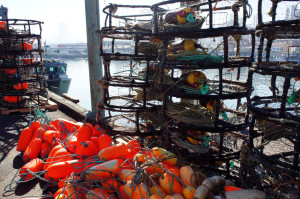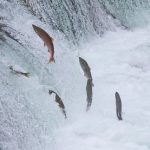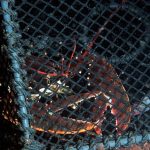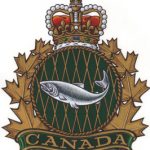Tag Archives: Woods Hole Oceanographic Institute
5 things to know about Japan’s Fukushima water release in the Pacific
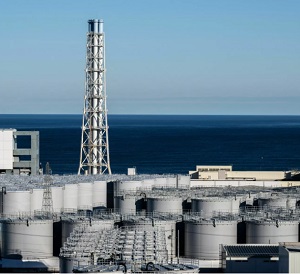 Workers in Japan have started releasing treated radioactive water from the Fukushima Daiichi nuclear power plant into the Pacific Ocean. The plant was destroyed in a 2011 earthquake and massive tsunami, and water has been accumulating ever since. On Thursday, the Chinese government announced it was immediately suspending aquatic imports, such as seafood, from Japan. A review by the UN’s nuclear watchdog says that the discharge will have a negligible radiological impact to people and the environment, but some nations remain concerned. Here’s what the Japanese government is doing, and why. >click to read< 09:12
Workers in Japan have started releasing treated radioactive water from the Fukushima Daiichi nuclear power plant into the Pacific Ocean. The plant was destroyed in a 2011 earthquake and massive tsunami, and water has been accumulating ever since. On Thursday, the Chinese government announced it was immediately suspending aquatic imports, such as seafood, from Japan. A review by the UN’s nuclear watchdog says that the discharge will have a negligible radiological impact to people and the environment, but some nations remain concerned. Here’s what the Japanese government is doing, and why. >click to read< 09:12

Right whale defenders question energy industry donations
A group opposing wind projects off the coast of Massachusetts released a report Tuesday that documents contributions from wind energy developers to environmental groups in the state, donations that the authors of the report say cast questions on the ability of groups to analyze the impacts that wind projects have on the endangered North Atlantic Right Whale. The report, released by the Save Right Whales Coalition, catalogs $4.2 million between wind developers like Vineyard Wind, Bay State Wind, and Orsted to environmental groups in Massachusetts such as the Environmental League of Massachusetts, New England Aquarium, and the Woods Hole Oceanographic Institute. >click to read< 09:35

Multi-organization effort believes Cashes Ledge deserves to be permanently protected
The team’s efforts of four years ago, including holding roundtables and giving talks across the region, were undertaken in hopes Cashes Ledge would be awarded a monument designation. The effort failed, but it did play a part in the creation, three years ago, of the Northeast Canyons and Seamounts Marine National Monument, the only national monument in the Atlantic Ocean. Lamb, who now works with the Witman Lab and the Woods Hole Oceanographic Institute on various marine issues, believes Cashes Ledge deserves the same protection, especially since the Gulf of Maine is one of the fastest-warming bodies of salt water in the world. >click to read<09:37

“The Plight of the Right Whale” – What’s causing right whale decline?
There is no argument that the North Atlantic Right Whale is in dire straits. Dr. Mark Baumgartner, a biologist from the Woods Hole Oceanographic Institute, gave a compelling presentation on “The Plight of the Right Whale” this past Tuesday evening, Jan. 23, at the Vineyard Gazette office. Since it was advertised, it was well attended. One point of interest was that the right whales were making a healthy comeback, a two-decade period of modest annual growth; the population rebounded from 270 living whales in 1992 to 483 in 2010. From 2010,,, >click here to read< 21:12
Our View: Fishery managers need management | SouthCoastToday.com
 UMass Dartmouth’s School of Marine Science and Technology, housed in New Bedford’s South End, wrote the book on scallop surveys. SMAST’s peer-reviewed survey data convinced federal regulators the fishery wasn’t collapsing and that closed areas could be opened and managed for sustainability. The school built on a shoestring budget equipment that showed scallop populations were healthy, in contradiction to data gathered by improperly calibrated government equipment. So we ask: Why squeeze SMAST out of the process by cutting its allocation of Research Set-Aside funds from $500,000 to $100,000?
UMass Dartmouth’s School of Marine Science and Technology, housed in New Bedford’s South End, wrote the book on scallop surveys. SMAST’s peer-reviewed survey data convinced federal regulators the fishery wasn’t collapsing and that closed areas could be opened and managed for sustainability. The school built on a shoestring budget equipment that showed scallop populations were healthy, in contradiction to data gathered by improperly calibrated government equipment. So we ask: Why squeeze SMAST out of the process by cutting its allocation of Research Set-Aside funds from $500,000 to $100,000?
http://www.southcoasttoday.com/apps/pbcs.dll/article?AID=/20120831/OPINION/208310302/-1/NEWS01







 The BP oil spill left an oily “bathub ring” on the sea floor that’s about the size of Rhode Island, new research shows. The study by David Valentine, the chief scientist on the federal damage assessment research ships, estimates that about 10 million gallons of oil coagulated on the floor of the Gulf of Mexico around the damaged Deepwater Horizons oil rig.
The BP oil spill left an oily “bathub ring” on the sea floor that’s about the size of Rhode Island, new research shows. The study by David Valentine, the chief scientist on the federal damage assessment research ships, estimates that about 10 million gallons of oil coagulated on the floor of the Gulf of Mexico around the damaged Deepwater Horizons oil rig. 


























